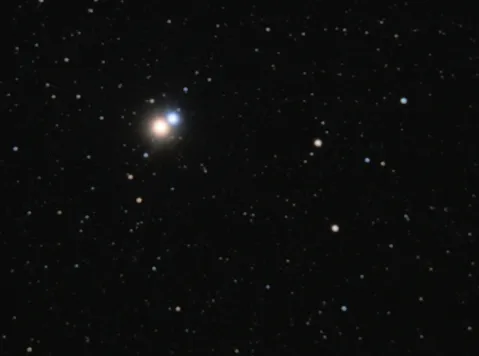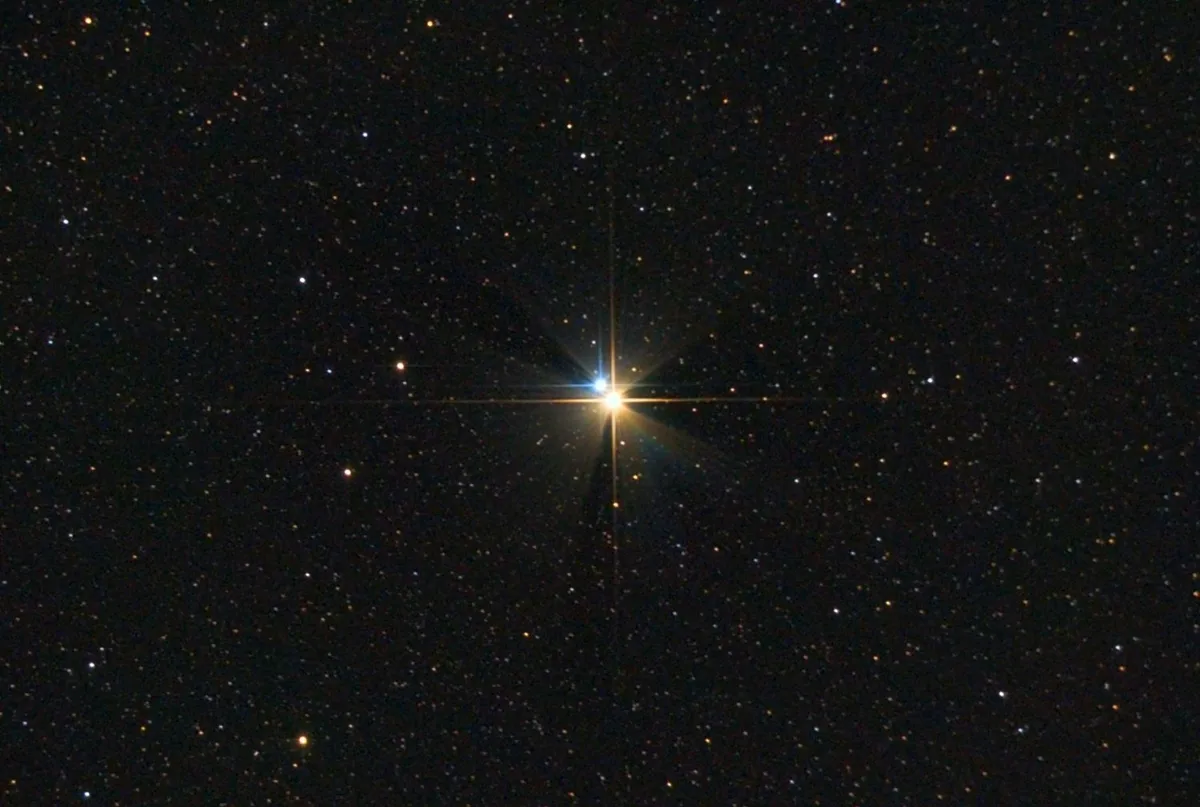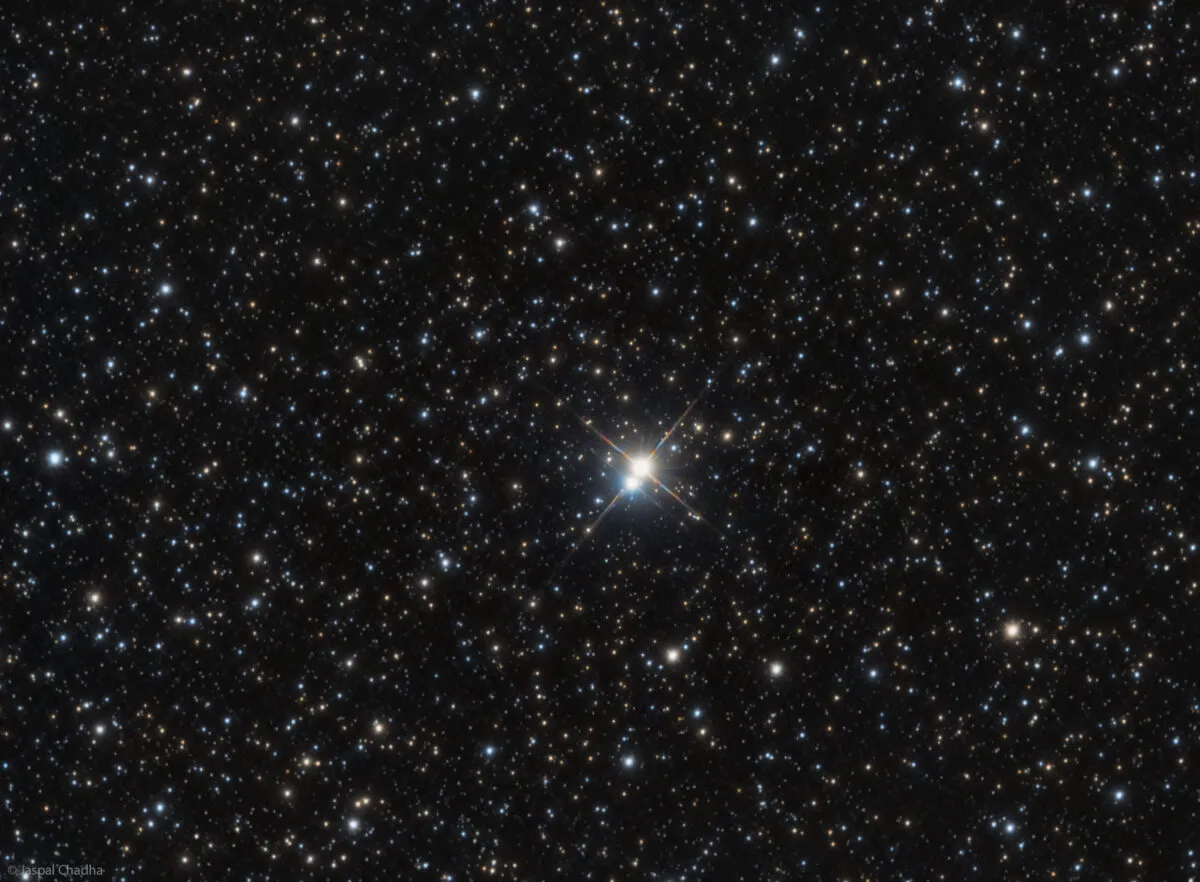Albireo is a summer stunner, a star that everybody should see at least once. It sits at the bottom of the Northern Cross asterism, a pattern representing the body, neck and wing stubs of Cygnus the Swan.
Albireo (Beta (β) Cygni) represents the swan’s beak.
It can also be found by locating the Summer Triangle asterism (one of our favourite summer constellations and asterisms), as it lies within the triangle's boundary.
Observing Albireo through a telescope reveals a beautiful double (mag. +3.2 and +5.1) with a stunning
colour contrast.
The brighter component, Albireo A, is an orange-giant 100 times more luminous than the Sun and 20 times as large.Through the eyepiece it has a warm yellow hue.
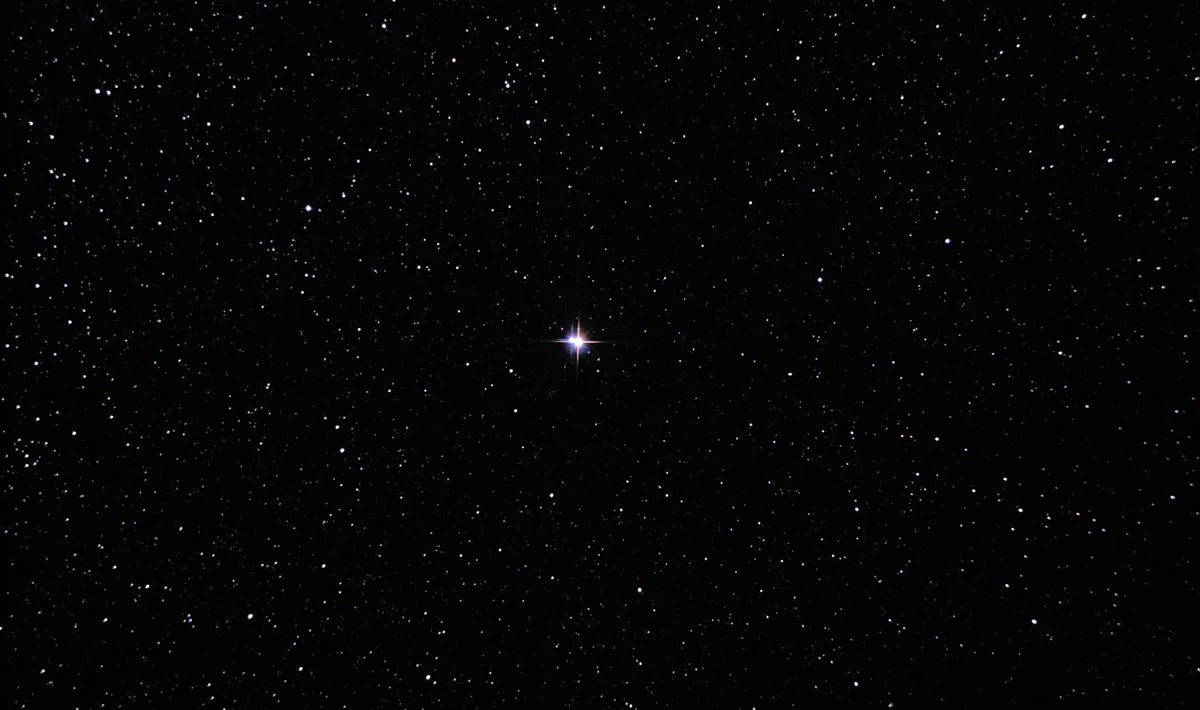
Albireo B is a main-sequence star 230 times more luminous than the Sun but only 2.7 times as large.
Its colour is towards the blue end of the spectrum, appearing distinctly azure-blue compared to Albireo A.
The stars appear to be separated by 35 arcseconds, an easy telescopic split. At 380 lightyears distance, this corresponds to a physical separation of 4,400 AU.
Albireo is often quoted as a prime example of a binary star, but it’s not certain Albireo is a gravitationally bound binary at all.
Some sources state it to have an orbital period of around 100,000 years – too long for us to have observed any orbital movement since discovery.
Others state that it’s just a chance alignment, a plausible argument based on the fact that the proper motions of both components seem to be different. The measurements made so far tend to indicate the stars are drifting apart.

Even if both stars were in mutual orbit, Albireo wouldn’t be a binary system because it has additional hidden members – at least two associated with Albireo A and one linked to Albireo B.
The next time you introduce Albireo to someone you should really describe it as a stunning summer quintuplet!
Regardless of whether Albireo is a true binary system, the star is a beautiful sight to behold.
Albireo is well-placed for observing from June to September, and a view through a telescope will reveal the two stellar components quite spectacularly.
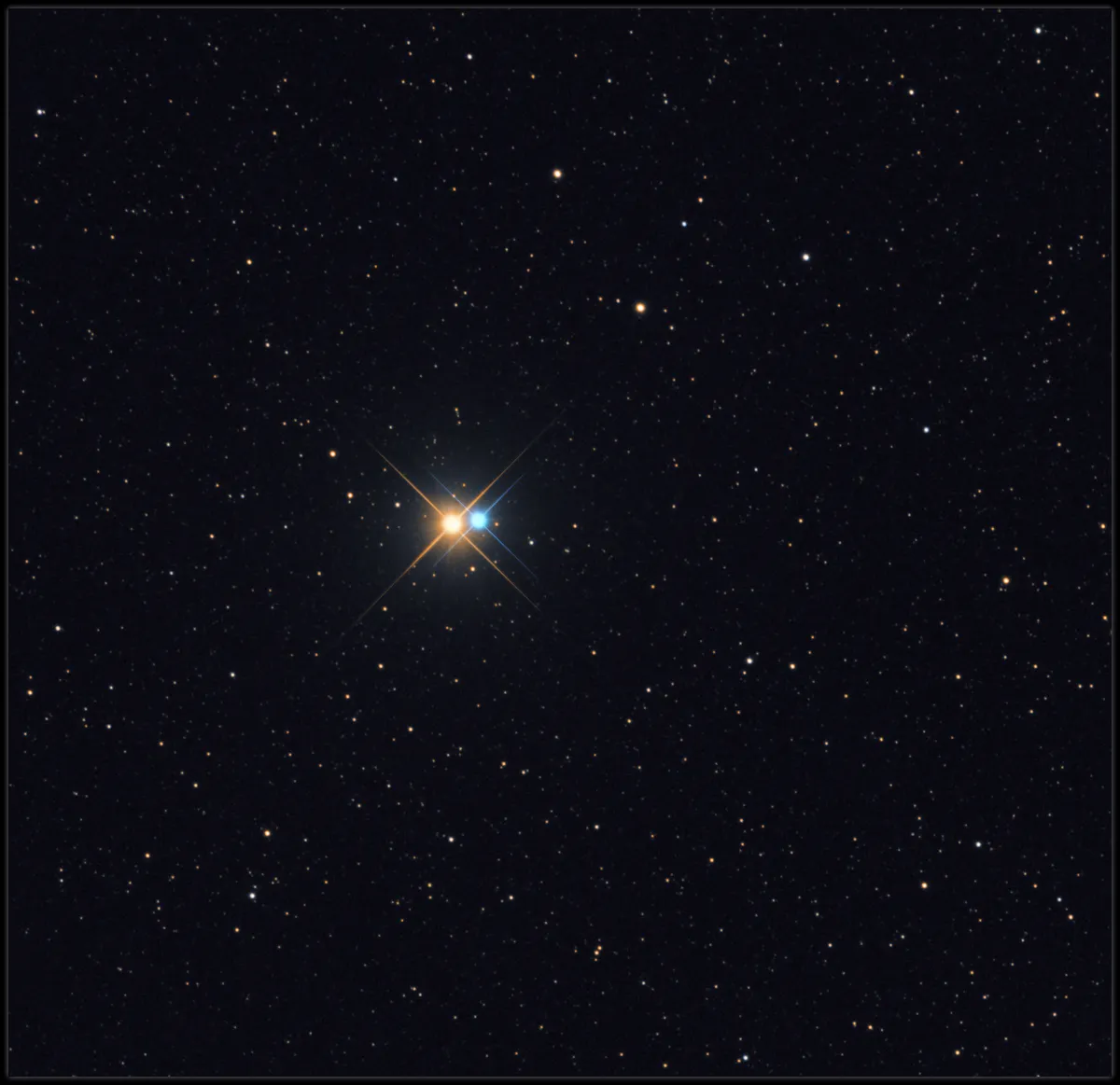
See if you can spot their contrasting colours and revel in the satisfaction of having resolved this beautiful double star.
Below is a selection of images of Albireo captured by astrophotographers and BBC Sky at Night Magazine readers.
For astro imaging advice, read our beginner's guide to astrophotography or discover our pick of the best astrophotography cameras.
And don't forget to send us your images or share them with us via Facebook, Twitter and Instagram.
